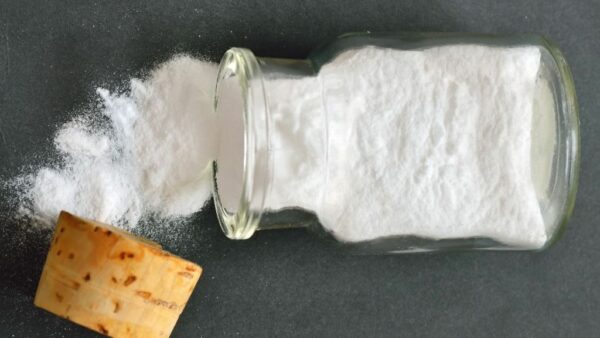Sodium Cyclamate is an artificial sweetener, known by the name E592. This is a bad start, you might think, as the name sounds terrifying. Come on! Read on and you can decide for yourself whether to consider food sweetened with Sodium Cyclamate as desired or something to avoid.
Our article lists all the important information regarding Sodium Cyclamate.
- Characteristics of Sodium Cyclamate
- Applications of Sodium Cyclamate
- The effects of Sodium Cyclamate on our health
Although many people believe that artificial sweeteners are an accomplishment of the past decades, that is not the case. Sucrose, which was the first chemically produced sugar substitute, was discovered in 1879. Sodium Cyclamate has also been present since 1937. At first, Sodium Cyclamate was used in the pharmaceutical industry to create a coating for pills that have a bad taste. Later they started to use it as a sweetener in sugar-free soft drinks, which is still its main area of use today.
Characteristics of Sodium Cyclamate
Similarly to other artificial sweeteners, the sweetening effect of Sodium Cyclamate is several times stronger than that of sugar: it is app. 30 times sweeter. Sodium Cyclamate does not have any aftertaste, except for some saltiness when used in high concentrations. It can be diluted in water and ethanol. It is heat and light-resistant and remains stable even in case of PH changes. They usually use it along with other sweeteners rather than on its own. The best effect can be achieved by mixing it with saccharin, in a 10:1 cyclamate/saccharin dilution. Sodium Cyclamate is not transformed into energy in the human body, so it is ideal to be used in energy-restricted and diabetes diets. It does not cause dental caries either.
Applications of Sodium Cyclamate
The application of Sodium Cyclamate is only permitted in a certain food. The maximum amount of Sodium Cyclamate to be used in food products is defined in the Codex Alimentarius Hungaricus. The maximum daily intake must be indicated on the label of the given food.
Products that contain Sodium Cyclamate:
- Sugar-free soft drinks
- Sugar-free desserts and confections
- Marmalades, jams and jellies
- Canned fruit
- Vitamins and food supplements
You can find Sodium Cyclamate in stores as table-top sweeteners, in the form of powder, pills or liquid; the most common brand names include Süssina, Polysweet, Polysett, Sweety and Huxol.
The effects of Sodium Cyclamate on our health
Sodium Cyclamate is dissolved in the small intestine, and it is usually removed from the body in the form of urine. However, in certain cases, it transforms into cyclohexylamine with the help of certain intestinal bacteria in the large intestine, which can cause testicular and sperm damage and bladder cancer. They used rats and dogs for the first animal testing, and due to the impacts of the results, several scientists began to research the topic further. Between 1970 and 1994, a Japanese group of scientists were examining monkeys that received a higher dose of cyclamate five times a week. The results did not clearly demonstrate the carcinogenic effect of cyclamate.
As a result of animal testing, the application of Sodium Cyclamate was banned in the USA in 1969, and it is also prohibited in Canada. In our country, along with another 50 countries worldwide, it is permitted to use it as an additive and as a table-top sweetener. According to research, the emphasis is on the high amount and long-term daily usage. The recommended daily intake is defined in a way that a multiple-dose of the maximum recommended amount still does not cause health problems, but consumers should nevertheless be aware in order to minimise risks.
Artificial sweeteners have been in the centre of attention for quite a long time; their effects on our health is continuously examined and considered when defining the daily intakes. People might still get confused because of the contradictory information and propaganda.
This is because every manufacturer advertises their products as healthy, with the aim of getting more profit from sales. However, it is true in the case of all food that if we eat in a moderate and diverse way, our body will definitely be thankful.


